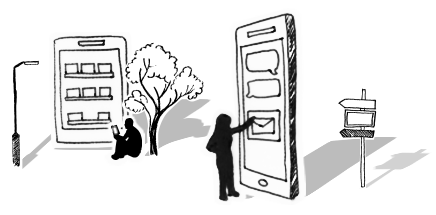




4 Ways to Create Change Communication That Lasts
Those of us who work in communications frequently support our organisation through major change. And for change managers, often the most challenging part of delivering change is what happens after the project has finished. We need to find ways of embedding the new processes or behaviours and making them stick.
This calls for change communication tools that last, are repeatable and sustainable and have a life beyond the project.
During business change, you’re asking colleagues to change the way they work. They’ll need reliable information, clear motivation and moreover, a shared story that connects any current disruptions to how things will be in the future.
It’s a time to invest in sustainable communication tools; these are tools that come to life the more they’re used. For example, an online portal updated by its own user community, or a visual identity that brings impact and character wherever it’s used. A colleague of mine calls them ‘futureproof tools’.
Done right, these brilliant concepts can pay for themselves quickly. They’ll inspire people to share content and contribute their own, and they can create a stronger sense of a collective journey to a common goal.
Based on our extensive client experience, here are 4 things to focus on to create effective, long-term communications tools:
1. Culture fit: Devise a tool that suits how people interact now
It’s a common mistake to introduce a platform, like an enterprise social network, that’s at odds with an existing culture. Change teams may hope that people will somehow automatically change their ways when they see it. However, culture is, by nature, hard to adjust, and therefore successful programmes work within their audience’s current preferences; there’s room to adjust engagement methods later if people start to become more adventurous. Also, tools cannot be just left to manage themselves. You will need to maintain them regularly by prompting people for content, asking questions and making suggestions. While this can be time consuming to begin with, it will become easier over time – if successful.
2. Usability: Strip back and simplify
It can make sense to offer just a little information in your change communication if it means the bigger picture is easier to understand. We’ve been working with a life sciences company who found that complex new role descriptions were getting in the way of business change. People were distracted by the terminology and said they switched off when they received emails about it. The client took a fresh stakeholder management approach using an online campaign to simplify who does what. A team member said: “These people are scientists; inquisitiveness is part of workplace culture. Start with something simple and they’ll ask the right questions as and when they need to”. So if you’ve developed a campaign that needs to run, keep things simple. People like simple! They are faced with complicated jargon every day so would welcome any effort made to make things easier for them to understand and act on.
3. Identity: Give the programme some character
A great identifier can increase the sense of a shared journey for everyone going through change. It could be a name, image or any visual that works with the organisation’s brand. We’d call it a communications tool because it does an important job in connecting activities together. For example, one of our energy clients won awards for its use of a three-day event to support major change. A strong programme identity ran through diverse activities, highlighting the fact that everything’s connected.
4. Involvement: People will only carry ‘their’ communications tool
Regardless of format, a communications tool will grow because people want it to. The more relevant it feels to individuals, the more they’ll invest. For example, companies often appoint change champions, but unless these individuals feel in control they’ll struggle to truly champion change. Recognising this, one client created a guidance document for its new change champions that provided key facts and pointers so that champions could talk about change in their own words, but with confidence supported by the right facts.
Overall, the true test of a sustainable change communication is whether it connects people to the same purpose and has a life after the project closes. We really enjoy revisiting clients to see how they are getting on with the sustainable tools left behind. With the right support and guidance, it’s incredible how well they can work.
For more, read this insight for ideas on how to ensure people are onboard for your change journey
If you want to be confident your change communication will stand the test of time and work long after your project closes, get in touch with our team and find out how we can support you.
To get the latest change tips, advice and guidance directly to your inbox, sign up to our monthly Business Change Digest.

